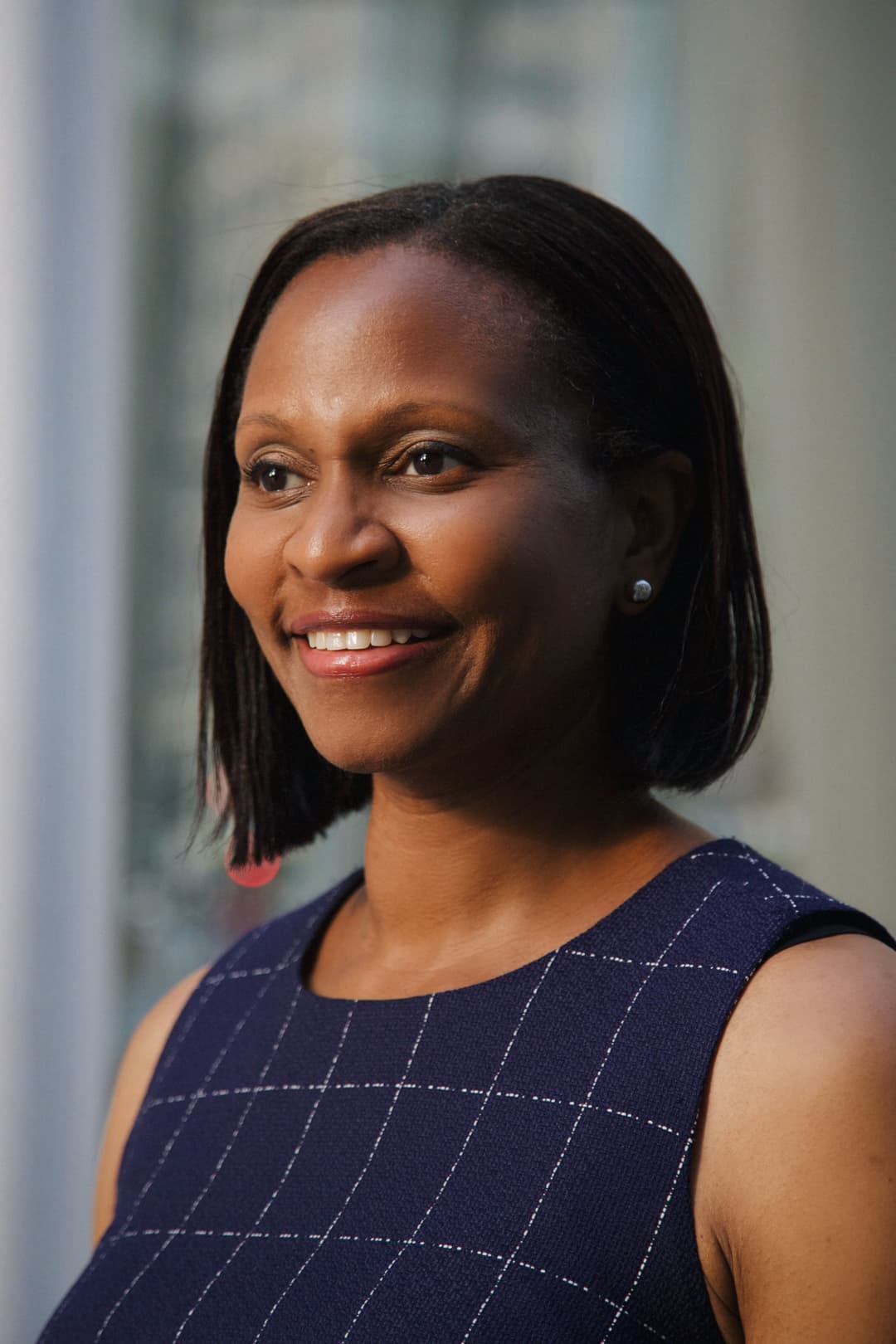
Victor Baker
Mid-Atlantic Investment Alliance
As Newark undergoes a major construction boom, Victor Baker, long-time Newark developer and co-founder of the Mid-Atlantic Investment Alliance, is working hard to bring more attainable housing to the city, partnering with local officials to ensure that Newark residents can continue to participate in and enjoy the fruits of their city’s growth.

Victor Baker at his completed single-family project in South Orange, NJ
By Eva Sergeeva for Commonplace
Can you give a brief overview of your company and the work you do?
We are Mid-Atlantic Investment Alliance and we’re a proud Black-owned developer and general contractor. We've been operating for about 16 years now, since about 2008; the company really got going right as the housing collapse and recession was happening. Since then, we've been active in the northern New Jersey area with a focus on commercial redevelopment and new construction. Officially, we are a registered construction manager and GC, but we’ve also been the Sponsor on multiple projects that we've been involved in.
There are three main managing partners: myself, Hassan Keith, and Michael Adams on a day-to-day basis. And we have other partners that are part of our team as well, Brandon Copeland and Tahir Whitehead. So it's a five member firm and that’s the core group, but we also have consulting relationships with a bunch of our other team members. I'm the managing member, Hassan is our primary construction manager and runs general construction for us, and Michael is focused on the overall business development of the firm.
Hassan and I were college roommates and we started and grew this business together. Michael was the first new partner to join the firm, about eight years ago, and I’ll say he’s been very instrumental in helping to take the firm in new directions that have really solidified our footing. Brandon and Tahir are our newest partners. They've been with us about two years now, and they're playing a significant part in our future vision and they'll be a big part of what we do going forward.
And can you share a bit about your personal background?
I grew up in Buffalo in Upstate New York. It was a beautiful part of my life; at the time Buffalo was really vibrant. Just so full of activities and with an amazing working class culture and community. After graduating high school, I went to Rutgers University, where I met a lot of my future community, my wife, and some of my lifelong best friends.
From there, I worked in finance for a few years as a retail stockbroker and as an equities trader. I lived in New York City probably for about 7 years. And then after that my wife and I were expecting our first child, so we relocated back to northern New Jersey, where we've been settled for about 21 years now, raising our family. I have two kids. My oldest daughter is 21 and I have a son who's 17.
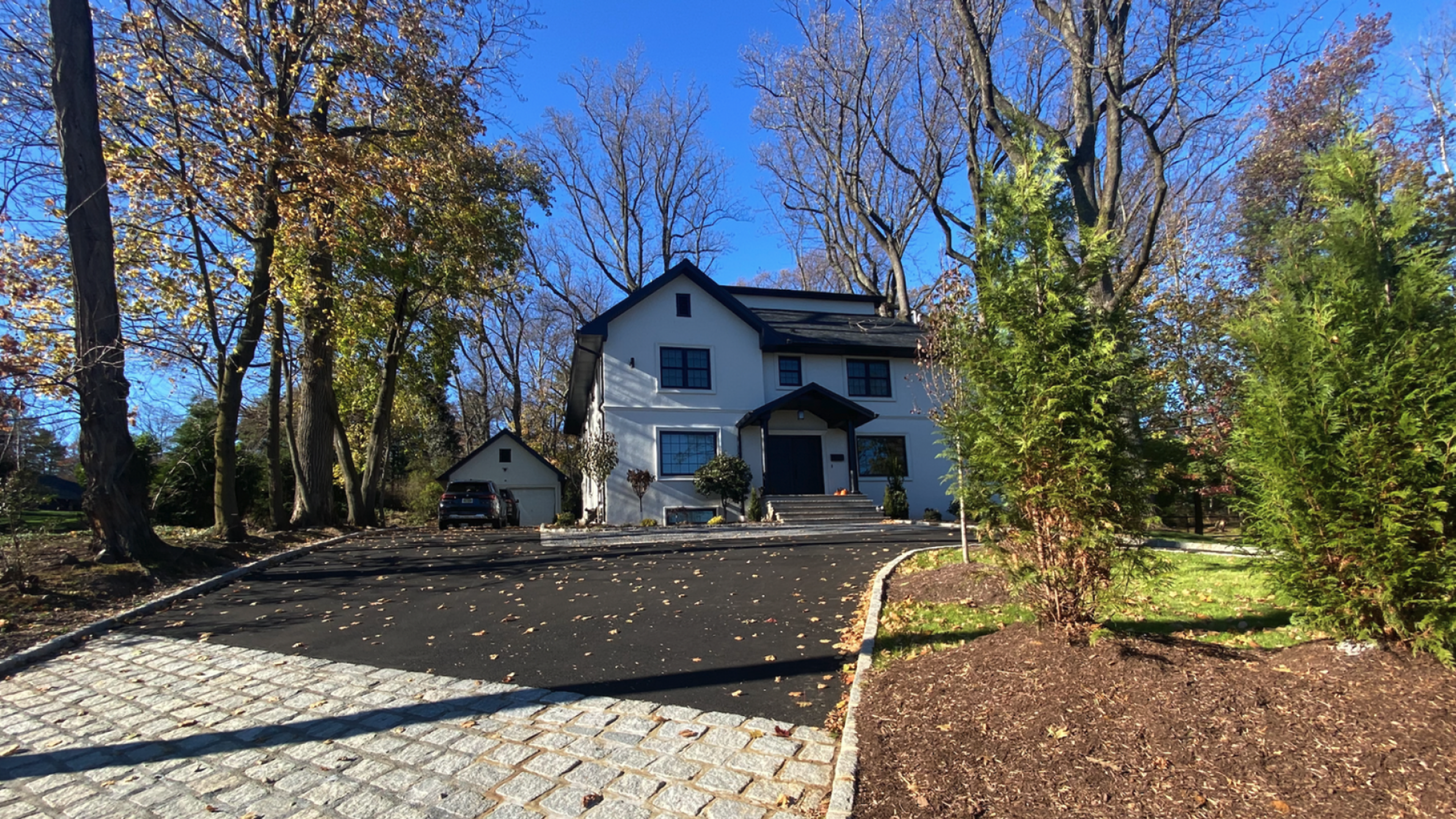
Mid-Atlantic completed a substantial rehabilitation of this home in South Orange, NJ
Courtesy of Mid-Atlantic Investment Alliance
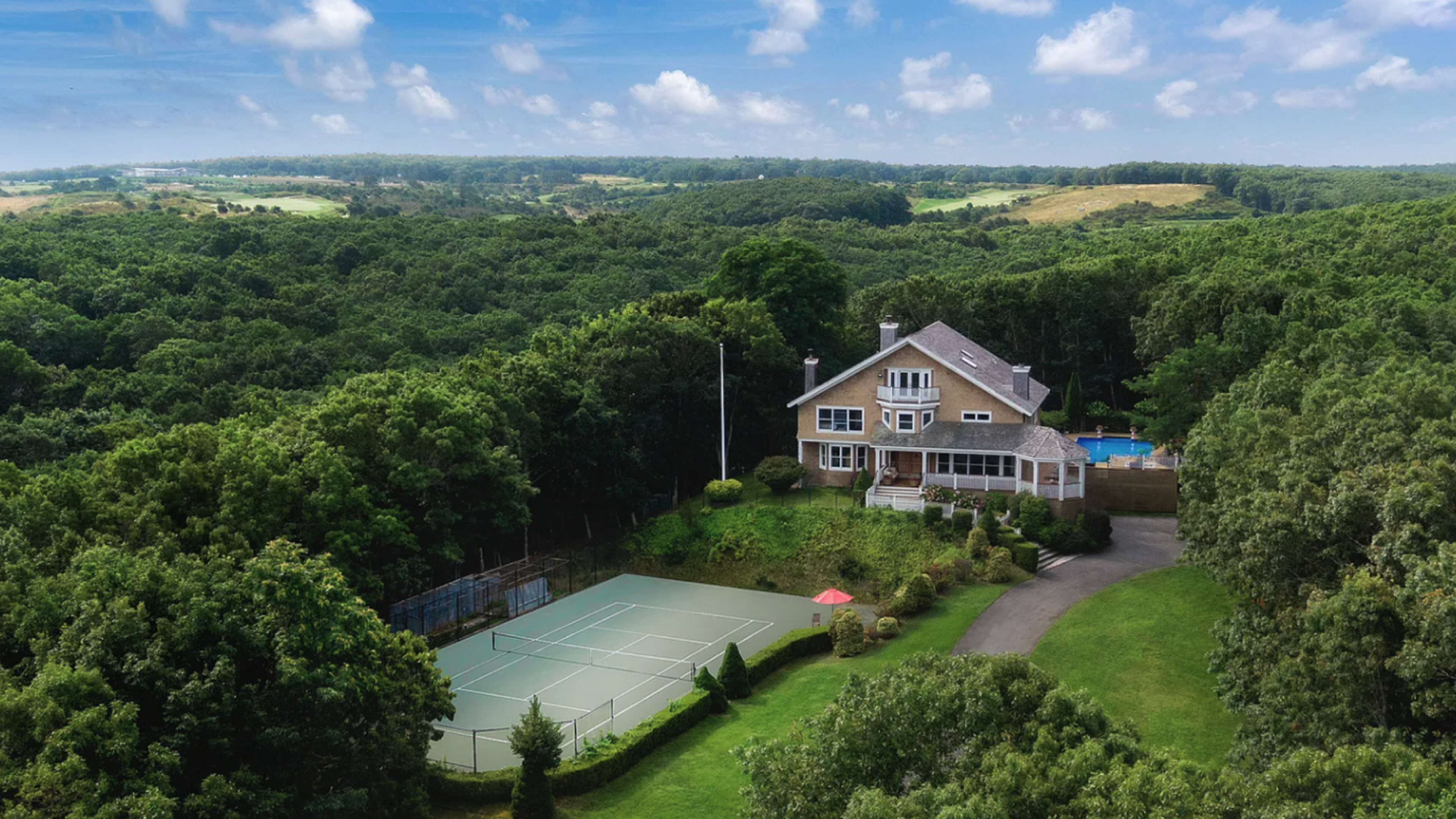
An aerial view of a single-family development Mid-Atlantic completed in Sag Harbor, NY
How did you find your way into real estate development and construction?
I think it was around 2001. I was actually working in finance at the time, but I had friends who were active multifamily investors and I was learning about rehabbing and flipping properties from them. I found it to be a digestible investment that was simple to understand. I started really getting into it probably a year or so before moving to New Jersey. When we moved, we bought a two-family and my single-family home at the same time, so we were relocating and also starting to invest in multifamily housing.
It wasn’t necessarily a smooth transition out of finance though as I didn’t have a background in construction. However, over time after managing different investments and crews, I kind of naturally picked up general contracting and construction management. As I invested my time and learned the business I also started building relationships and my network. Eventually those relationships formed into a decently strong and reliable construction team, which helped make my early projects possible.
Mid-Atlantic came about after a few years of individually investing and participating in real estate. Hassan was doing the same thing and he was actually the one who had gotten me into the business. Eventually, we combined our entities and our energies and created the umbrella of Mid-Atlantic. We continued mainly doing rehab projects, and then transitioned into our first ground-up new construction project at the end of ‘08.
In that first project, we were building low income and workforce duplexes in Newark, which we sold to people from the area. Our buyers were police officers, a New Jersey Transit manager, a manager at Home Depot, just to name a few. We continued to be involved in general contracting from there and transitioned to apartment-style new construction on our next project, which was a ground-up condo development. Along the way, our brand just continued to grow as we moved from mostly construction rehab work to also including more redevelopment and new development work.
What motivated you to transition into real estate in the first place?
Coming from the world of finance, I think I initially was really interested in the fundamentals of real estate and what it meant to invest, create value, and look for profits in housing versus stocks, options, or other instruments in the financial markets. And what attracted me was that the market for housing, a physical, touchable commodity, moves slower than other financial markets. I think by nature I'm more of a calm, somewhat laid back person, so that slower pace, as frustrating as it can be at times, was appealing to me.
And while I enjoy the business aspects, I also really like construction. So there is an organic appreciation of the business itself - I’m not programmed to just chase transactions one after the other. I enjoy the process of renovation and transformation and I like seeing how it impacts a location or even just perceptions of a location.
For example, our Martin Luther King Boulevard project is super special. I could be biased, but I love the neighborhood and the location. It's across the street from Arts High School and St. Benedict's Prep School, so it's pretty scenic with beautiful architecture all around our lot. Meanwhile, the building that used to be on our lot was left underutilized and dilapidated for, I believe, close to 20 years. And so with that project I really believe that we can take the most underutilized lot in the neighborhood and bring to fruition a highly utilized, beautiful asset that will benefit the entire area. That definitely drives me and I know my other partners all feel similarly.
It’s a real opportunity to be able to do things like that.

Photos of Victor's projects and partners adorn the Mid-Atlantic office
By Eva Sergeeva for Commonplace
How many and what kinds of projects has Mid-Atlantic completed to date?
Mid-Atlantic has completed about 13 projects to date, primarily in Newark and northern New Jersey, though my partners and I have completed projects in Georgia and other geographic areas as well. Some of those projects are full-on developments, with a full pre-development and construction cycle. In between those, we've completed construction on residential, mixed-use, and commercial properties, as well as unique jobs where we've done fit-outs for new spas, or restored an old church. A lot of these were major rehab or restoration work on severely damaged, blighted properties. I would say about 40% are projects where we are the Sponsor as well as the contractors building for ourselves and the rest have been as a construction manager and GC for another owner.

In front of the Lofts at Lincoln Park
By Eva Sergeeva for Commonplace
What is one project that you are proud of and believe best represents Mid-Atlantic and its body of work?
Definitely the Lofts at Lincoln, 90 Clinton Avenue in Newark. This is a highlight for me in my career because I feel we achieved a level of distinction as the sponsor and general contractor that is just such a testimony to our growth. We have gone from not really having any background in real estate and just getting involved with small two-family homes for, like, $40,000 to a level of construction and development expertise that allows us to build a multifamily condominium building from the ground up. The project was a large-scale project for us; we had many challenges and it was not a walk in the park by any means, but we successfully finished the project and I think it was definitely a big, big step in the right direction for us – a real milestone for our company.
The land was made available through an RFP as part of a City of Newark homeownership program. We partnered with the city to create a 100% emerging market workforce housing building to improve stakeholdership in the community and to help that area get on a better footing and get going in the right direction. This was a neighborhood that desperately needed investment – our building was the first new development that had been done in that vicinity in decades. So this wasn’t extremely high end, unreachable pricing, which helped it sell out before construction was even completed; we really got a great reception from the community.
There are other projects that stand out in my mind, but maybe more for the aesthetics and beauty of the end product and the experience of seeing and creating that transformation, rather than the scale of the project. We did a project in South Orange in New Jersey, a nice suburban neighborhood, that was a substantial value-add rehab where we gut renovated everything and added a new section to the house. The parcel was a significant size for a single-family, which allowed for a beautiful and spacious end product. There’s also a new construction single-family home that one of our partners completed in Sag Harbor, Long Island, which is just a gorgeous property with sweeping landscaping, an amazing pool, and a tennis court. I see those projects as a representation of the power of construction. When it's done right you can truly appreciate the beauty of the design and architecture.
What was the most challenging part of executing Lofts at Lincoln Park and what lessons did you take away from the project?
As Mid-Atlantic grew, the opportunities we had allowed us to get some real experience and learn about development, construction, and all that entails. And Lofts, being a huge milestone for us, took that learning to a whole new level.
One of the major challenges was managing all the different trades and the project schedule at scale. We went in with a great network of contractors that we knew and worked with on past projects. However, what we learned is that we also needed contractors with their own balance sheets and credit, so they wouldn’t need an advance or for us to carry them. There were a few subs that were solid tradesmen, but not really equipped financially; the project was a huge economic opportunity for them, but ended up being more burdensome for us. And then there were more general project management challenges, like hiccups between trades, and just managing many different personalities as you’re trying to get the building done in a timely manner. That's just the nature of large scale construction.
However, we were also blessed with some great contractors that did extremely well in their trade and helped move the project along at a swift pace, which made the inspectors and banks happy. So, you know, we tasted both ends of it, but ultimately we were successful and I think we took the right lessons from it. We finished that project aligned with solid people, organizations, and contractors, as well as a better sense of what staffing we want to look for in future projects.
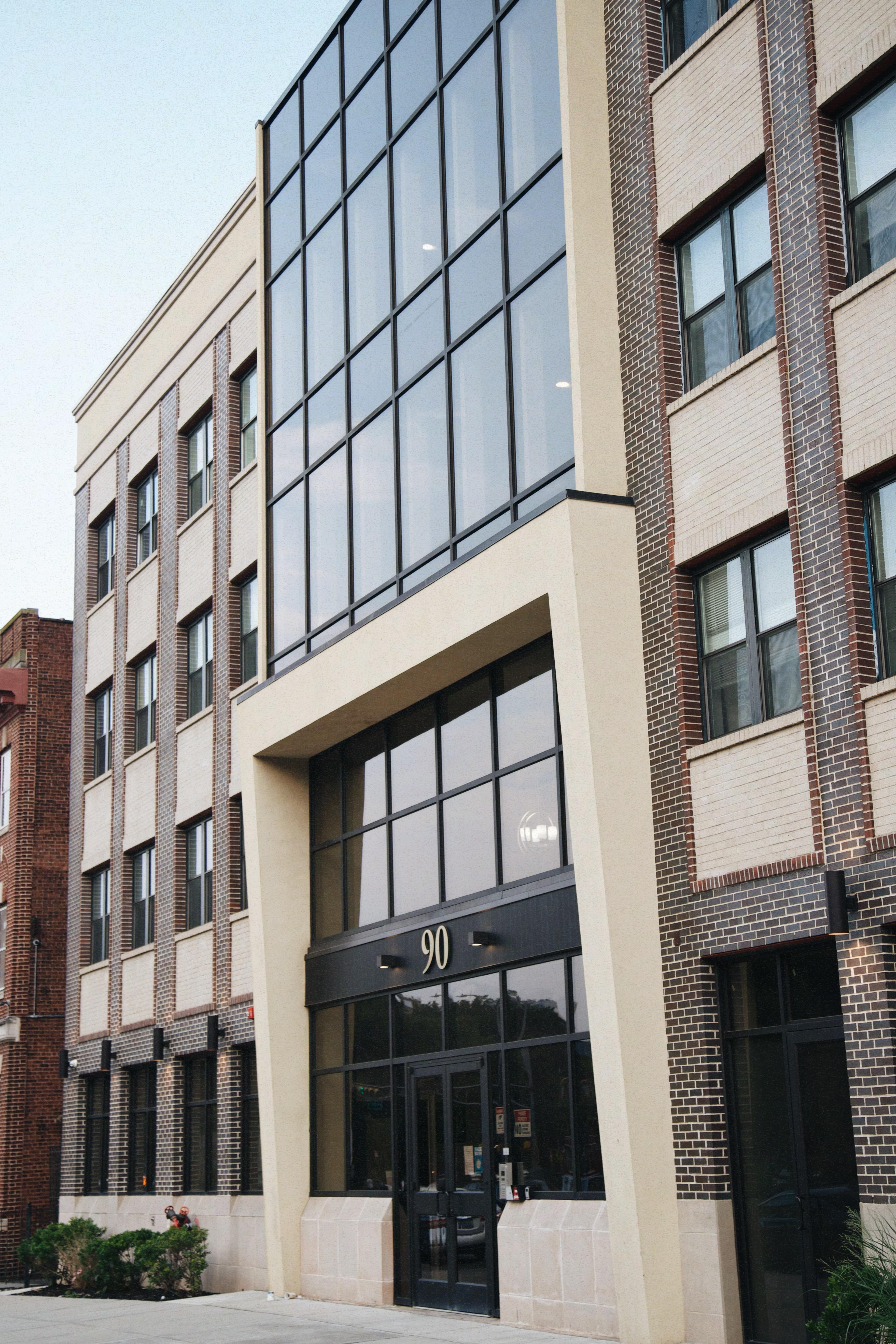
The Lofts at Lincoln Park mark Mid-Atlantic's first foray into large multifamily development
By Eva Sergeeva for Commonplace
Is access to capital a significant challenge for you and your organization, especially now that you are starting to scale? If so, please elaborate.
It is. I have accomplished a lot in terms of private fundraising, not just from friends and family, but also other personal and professional networks. However, as far as breaking through with institutional capital, getting an allocation is still very challenging. I’ve been in the business for a significant amount of time and I think we all see the numbers. There aren’t a lot of sizable minority contractors and there are even fewer substantially capitalized minority developers. From what I’ve seen, many of the most successful Black, minority, and women developers have built connections at the likes of a Goldman Sachs Urban Investment Group or tapped into an institutional level asset manager. However, this would represent probably less than 1% of the assets under management at these entities. Access to capital is tremendously hard and still very limited.
On the debt side, I would say we've been successful at securing LOIs and term sheets pretty much the whole time we've been in business. There’s a variety of different kinds of debt as well as different debt programs, so I think it’s very doable and that we know where to go. CDFIs in particular have definitely been reliable sources for us. It's more mission-driven funding that may take longer to lock in the commitment and execute, but the debt is there and there's a lot of other good supporting tools that come with it. However, I will say that there is a ceiling and deal size begins to factor in accessing substantial debt as you start to go higher up to different institutions, for sure.
"Looking at the financial ecosystem at a high level, it’s not like capital is looking specifically to fund minority operators, so there's no real intention to allocate capital in that way. For the most part, it's not even a consideration. And when it does become a subject of discussion, it's under a framework that's unrealistic and disconnected from true intentionality to actually allocate money. I don't think it's a deep analysis. There's just no intention to do it."
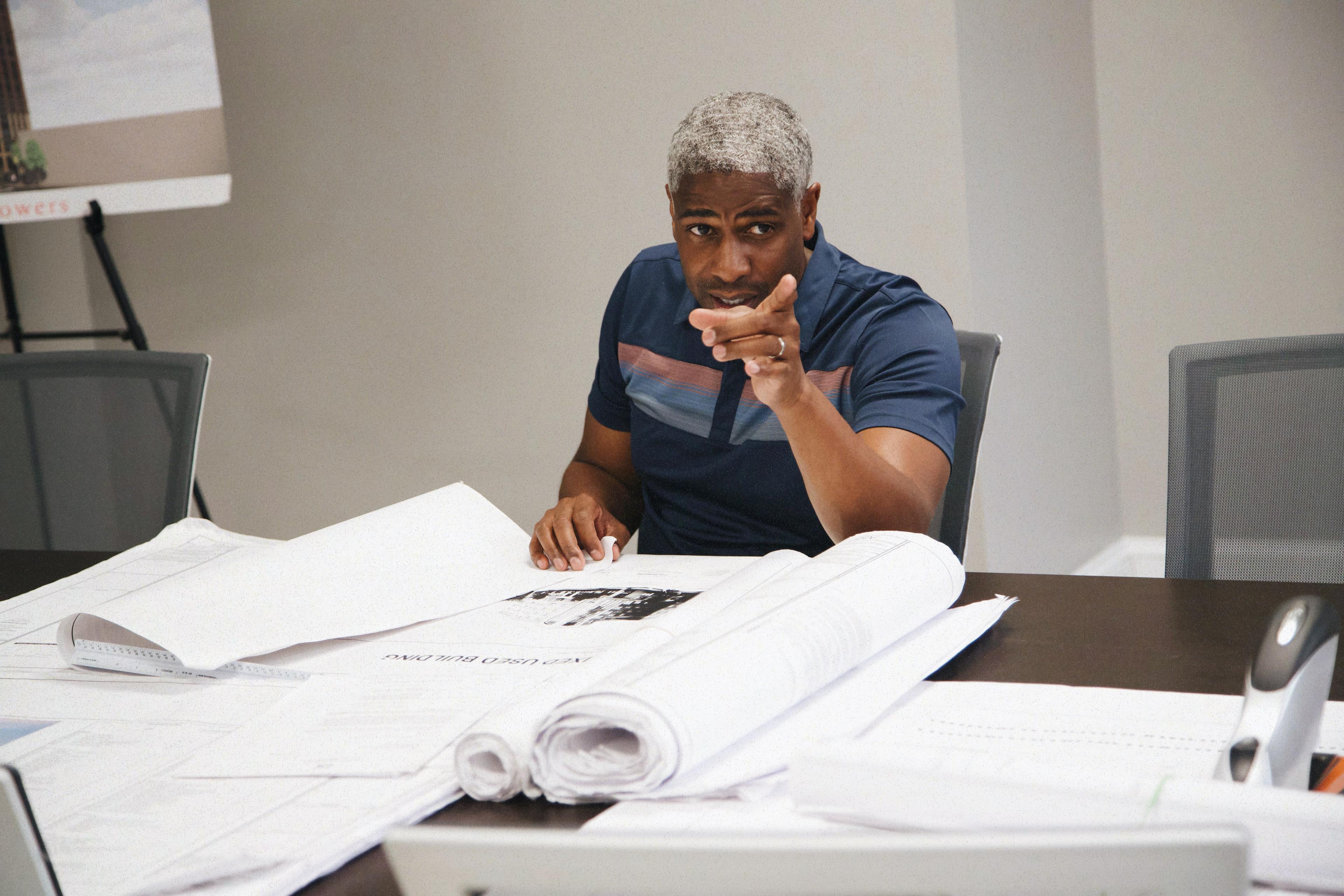
By Eva Sergeeva for Commonplace
While we’re on the subject of capital, much has been said and written about the difficulties Black and Brown developers face in accessing capital, particularly institutional capital, for their projects. What are your thoughts on this issue and does it reflect your own experiences?
I’ll preface this by saying that, for me, putting together a substantial amount of capital to get started was kind of a natural transition out of the world of finance and I always had some access to capital and equity to put together small projects. However, as you grow, your capital needs become bigger and your ability to secure capital on a larger scale dictates how much further success you can have, which has been challenging. So, while I’m not the person who has had zero access to capital and not everything has applied to my personal situation, a lot of it still holds true and reflects a collective narrative.
After the George Floyd tragedy, there was so much conversation about guiding capital – exactly what we're talking about right now. But if you go back and audit, there’s a disconnect that shows it was more of a narrative than actual funding. Systematically there is no such thing as risk capital being allocated or deployed to minorities.
One problem is that providers like Prudential or Goldman Sachs must deploy their funding with minimum check sizes ranging from $15 to $30 million, which really doesn’t help most minority developers. Out of all the people you’ve talked to, many of whom are folks operating at a much higher level than myself, how many have a shovel-ready $30 million dollar project that’s going to earn 20% annually in their pocket? Even if you have such a project, there’s always something that misses the mark. I have heard of minority developers with thousand-unit track records who somehow still receive all of the same responses that I get for my proposals; something is always out of alignment and they'll tell you, “Let's talk about it on the next one that you have.”
There is a fund out of Chicago that, shortly after the George Floyd murder, announced a $500 million accelerator program for underrepresented managers and, you know, all the other buzzwords. A friend of mine was working with a well-established, minority-led housing development firm. He applied for funding for a few hundred units of workforce and affordable housing, but they weren’t able to secure any equity funding – during an amazing market for new construction with a record low cost of capital, too! The funder objected stating that their focus was on non-new construction plays. If respectably established players can’t find alignment with a fund that has very publicly said they have set funds aside for diversity and inclusion, then I just don’t see how most minorities of smaller scale will have any chance either. To be fair, maybe they’re just not comfortable with new construction, but even so, they should still probably be more comfortable doing that in this case.
So this all represents to me that there's no real intention to allocate the capital, even when there’s a narrative and a headline that you’re reading and hearing. It’s still going to have metrics that are by and large disconnected from reality and the money will never get deployed. There's just no system set up for that and the numbers reflect it. If there were, Don Peebles* wouldn’t be able to continue to say that of the $80 trillion currently invested by private equity and venture capital funds, less than 2% is invested in firms run and owned by Black and Brown, minority, and women leaders, combined. Instead, he's able to give you that statistic today, a year ago, and next year. He’s going to continue giving you that statistic because this is something that's institutionally ingrained.
We just have to look at it simply for what it is. Trying to continue to analyze why trillion-dollar institutions are not cutting checks to the minority community is almost insanity. At this point, I think the conversation has to transition from being concerned about not getting an allocation from PGIM or Prudential because they're requiring metrics that we don't meet right now, to discussing how we can launch funds pooling our own community capital along with outside capital. Because otherwise I think you just get a repeating circumstance and that’s what we continue to see today.
* Don Peebles is founder, chairman, and CEO of The Peebles Corporation, one of the country’s most active Black-owned and operated real estate investment and development companies.
"If this is supposedly restorative funding that has been denied for 100 years, which has led to all these terrible statistics that we all see, then different risk tolerances and flexibility really are things that should be baked in."
How is your pipeline looking today? Do you have projects with outstanding capital needs that you’re looking to address?
The project on MLK Boulevard I mentioned is shovel-ready and we anticipate that we’ll be in the ground between now and the start of 2024. For that project, we purchased a 12,000 square foot, two-story commercial property that was formerly a bank. We got it upzoned and approved for a 41-unit mixed-use building and it will be a seven-story building coming in at around 70,000 square feet. Our Lofts at Lincoln project was just over 55,000 square feet, so this will be our next project of that scale.
For that project, we have our loan commitment in place at a good interest rate, fortunately. However, with the massive interest rate increases, cost increases, and everything else that has gone on, we do have a bit of an equity gap. To date, we've put in seven figures of our own equity in the project and now we need to bring in a little more for this project and for the portfolio in general.
We are also a JV partner on another project, Kawaida Towers, that is a 16-story, 66-unit 100% affordable housing development that's being entitled right now. That project will be on the corner of Central and Halsey Avenue in Downtown Newark and will bring new community spaces to the area. It really is a groundbreaking, phenomenal project that is inclusive to the greatest extent. We were in the entitlement phase over the last few years, but we finally have preliminary site plan and historic board approval. So now we’re completing construction drawings and our JV partner is assembling tax credits, along with city subsidy and private capital.

The BLVD is a proposed 41-unit multifamily development in the Mid-Atlantic pipeline
Courtesy of Mid-Atlantic Investment Alliance
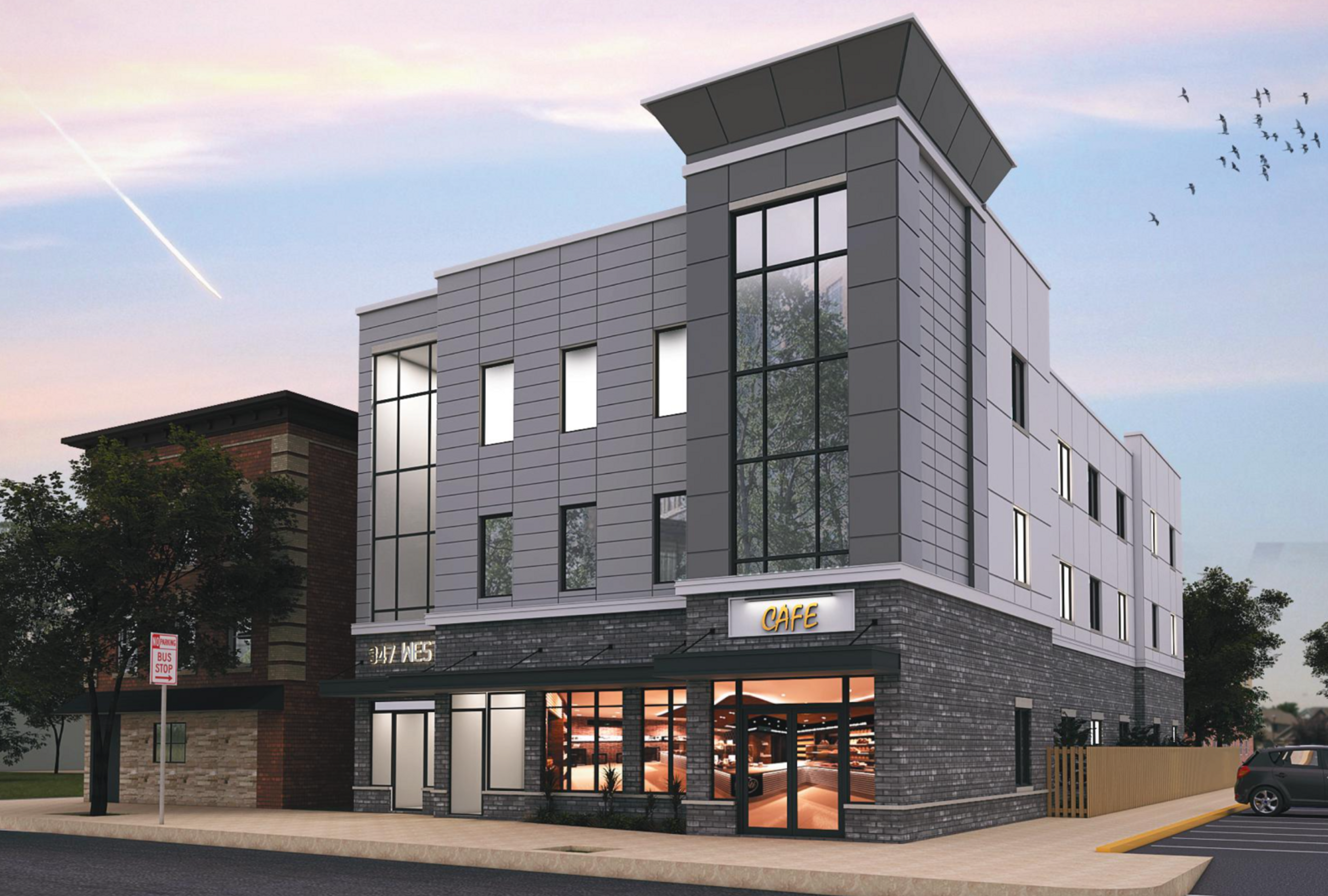
Upon completion, the West Market Street project will feature 11 residential units and ground floor retail
What are your thoughts on impact in real estate?
For the areas and types of projects we work on, I think impact really is just completing projects. We've really only operated on vacant lots in areas that have been desperate for development and that has led to happy end users in the local community. For example, we completed a substantial renovation of a small 6,000 square foot church a few years back. The church hadn't been utilized for at least a couple of decades at that point and it was very dilapidated. It was a massive restoration and we were able to essentially bring that building back to life.
And the impact is that a building that sat rotten and empty for decades is now hosting a church congregation again, with weddings and other community events being held there. There’s also a vibrant elderly community there now that’s enjoying their new facility. For the local community, that's super impactful, right? So, to me, that shows when you take a dirt lot that's vacant with no use or a building that’s falling apart and you put a new building there, that is an impact that is visible, immediate, and valuable.
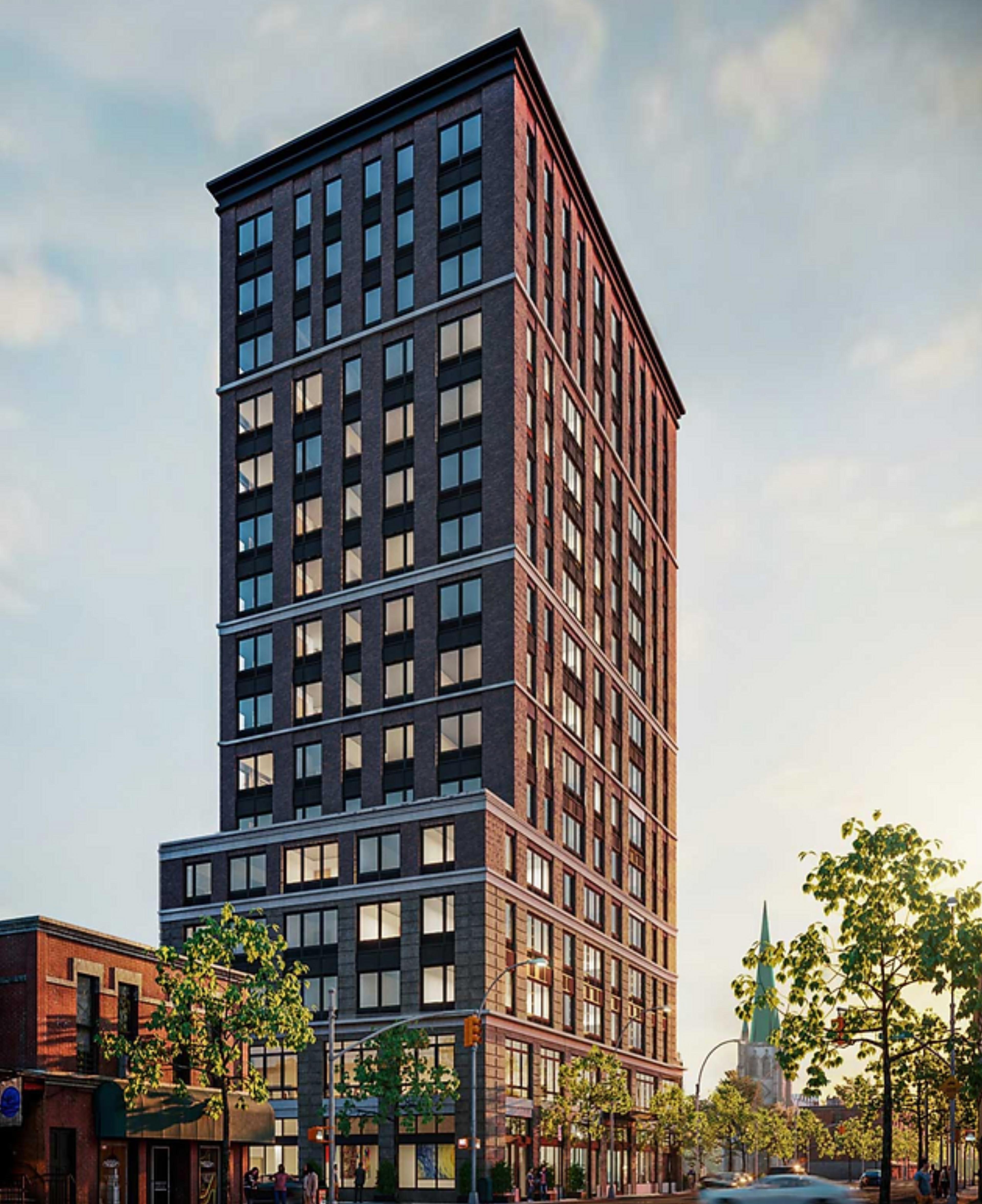
Kawaida Towers will be a 100% affordable, 16-story, 66-unit multifamily development
Courtesy of Mid-Atlantic Investment Alliance
Do your developments fit within any specific categories of impact? If so, what are they?
Workforce housing has been a major part of everything we've done, and not just because the programmatic funding on some of our projects come with requirements either. Our goal is to develop to serve the people of Newark living in the neighborhoods where we operate. We want people to be able to access and enjoy the things that we're building. Going forward, we also want to add more mixed-income developments to our portfolio. That should promote more diverse participation in our projects and it’s a vision we share with the city government.
It’s also a priority for us to build holistically and consciously, incorporating the most environmentally friendly systems we can utilize into our developments. Where it makes sense we’ll check items off the list and go for certifications, but I think generally our focus on excellent construction and best practices leads organically to environmental sustainability and a better quality of life for our end users.
What are your thoughts on the tension between financial returns and impact?
I've had this conversation quite a bit recently, and I think that you really need to meet in the middle to have great development results. Development is valuable, and not just in the financial sense. Not all development is like $3 million condo skyscrapers in Jersey City or Brooklyn – most development isn’t. A lot of development is really about resuscitating a dead area or an abandoned or partially used building. In those instances, development is truly important work and developers should be rewarded for the risk they’re taking to build and make that difference.
However, people are also important, so affordability and community need to remain front of mind - it’s not enough just to enhance the dirt and the location. As developers, we should consider what benefits we can bring to our urban environments and think carefully about how our new building enhances the community. The goal should be to be inclusive and bring new benefits for the people that are there today rather than displacing them. If you're charging, you know, $5,000 a month rent in an area where the income is not even close to supporting that, then that's just egregious. At that point, you’re building at the expense of the communities that need this development.
Both of those perspectives have to be considered and you have to meet in the middle. Everyone needs to be included in the discussion, but too often we’re focused on one perspective at the expense of the other.
"The residents living there want to see their community heal, move forward, be more vibrant, and have more resources. What they don’t want is new development that is a cost rather than a benefit to the community."
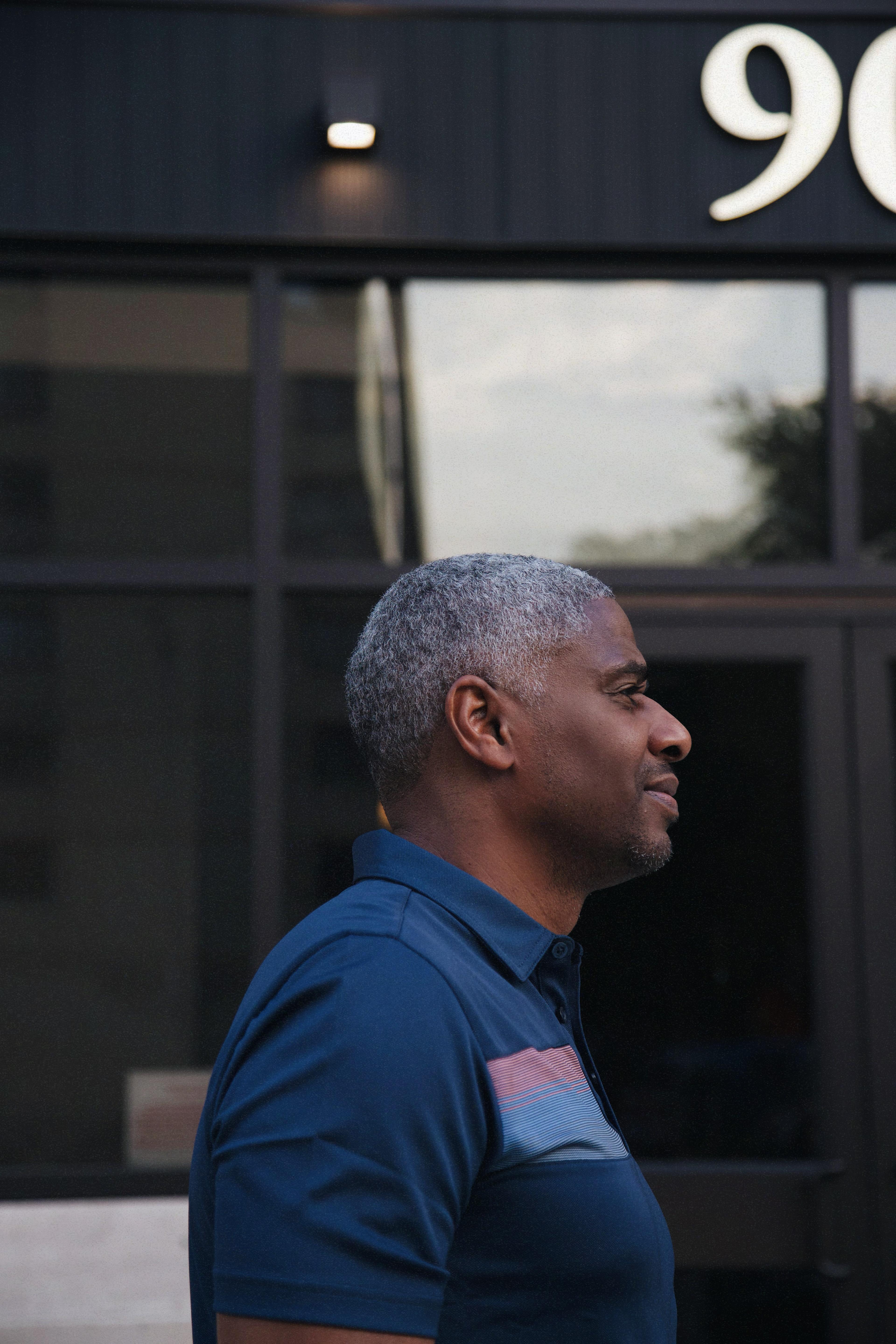
The Lofts were completed in partnership with the city of Newark
By Eva Sergeeva for Commonplace
What is the role of government and policy in making the kind of impact you’re envisioning possible?
Public-private partnerships work. If your development includes low income housing or has a programmatic focus on a certain demographic, like working class people, artists, or seniors, oftentimes there are public dollars that can help fill gaps in your construction financing. From our very first deal on this has helped us fund and build projects that meet local needs. For example, for Lincoln Lofts, we put in substantial private dollars along with a construction loan that we had from Savoy Bank and the city of Newark contributed to the capital stack in the form of tax abatements and redevelopment funding. With that contribution, we built a high-quality product at a purchase price that was affordable to the young professionals and families that the city wanted to attract. It was a win-win; we were able to get the project built and the city got exactly what it wanted: stakeholders who wanted to be part of the growth and stabilization of Newark’s neighborhoods.
The other benefit is that public subsidies on a project often attract investors, even if the location of the project isn’t pretty. It’s not everyone, but there are definitely people who are interested in investing based on that, especially if there are tax credits involved. For instance, when we were working on our first project back in ‘08 or ‘09, the markets were crashing 800 points a day, but we still were able to secure financing because there were subsidies. When we went to the bank for construction financing, they were looking at a guaranteed sum of money that was already part of the capital stack, which helped mitigate some of that perceived risk.
The result is that you get a bit more stability in your pursuit of project funding. Your project may not have the same profit potential that a market rate project might have, but you still get fees and you benefit from a more positive perception of your deal among investors and the community. That said, it’s not the best solution in every case and it may not always be easy to put together. And, personally, I don’t think a business built on 100% government collaborations is necessarily a healthy one. That’s a tough business model.
Looking ahead, what are your near and long term outlooks for your business and the real estate industry as a whole?
Not to sound like a broken record, but I think that you will need a strong capital position to participate in commercial real estate going forward. With the cost of capital and interest rates still increasing, I hear over and over again how pro formas are getting blown up. So if you’re relying on debt, it’s a tough road ahead. If you’re able to balance that with equity, then that writes down the need for debt and allows you to continue securing assets and cash flow. There are definitely opportunities ahead for he or she who has capital.
And if not, then I think you’re going to be stuck playing on a smaller level in real estate. If you have good credit and you’re doing small multifamily things, you’ll do the things that pencil out. There are always opportunities though, so even though it’s tough you can still do well.
"We’ve created our Value-add & Income Fund as a way to meet the challenges ahead. It’s a registered 506(c) with a $25 million limit that will pool capital for us to purchase cash flowing assets, support new construction and value-add projects, and form new joint ventures. I’m already seeing that inventory is shaking loose in the market and this fund will equip us to react and take advantage of those opportunities going forward."

By Eva Sergeeva for Commonplace
As you reflect on your career and company, what are some things you wish you knew when you first started?
Something I wish I knew early on is that just because something may be a little more expensive than what you budgeted for, doesn’t mean it should be excluded from your consideration. I think in the beginning we’re all looking for the lowest barrier to entry and that means the cheapest things. Sometimes that’s great, but sometimes there are really strong opportunities where things cost more and you may need to be more creative about how to get involved. You may be buying into higher quality assets that cost a little more, but the return and the cash flow potential is probably also better than the cheaper setups that you may be looking at.
There have been land or housing investments that I’ve personally made where I paid maybe double the highest price for anything I’ve ever paid for anything in Newark, but at sale the return was worth it. Paying $400,000 for something that’s worth $800,000 a few years later with some minor upgrades is much better than getting something for $100,000 and having to put in a lot of work to get a similar return. That’s definitely a mindset I wish I had when I was just starting out.

By Eva Sergeeva for Commonplace
What is the legacy you hope to leave?
Two things. First, I would really just like to complete more projects, especially ones that are generationally significant, and to a certain extent I think we’re already doing that. So the other thing I’d like to add to that legacy is to be a part of improving the process of financing projects.
As I’ve said, equity is critical and raising capital, while doable, is a long arduous process. The biggest lesson I take from my body of work is that skills and knowledge are needed to be effective and functional, but if you aren't able to get your capital together, then you can’t really be a formidable player. You could participate in a smaller, personal way, and my partners and I have all done that, but development at any kind of scale is capital intensive. I don’t want to shortchange expertise because that’s not going to be a winning formula either, but the capital is what is going to distinguish you as a player or not, in my opinion.
So the legacy that I would hope to leave, besides putting up more beautiful buildings, is to revolutionize access to financing. As I’ve mentioned, we’ve already set up a fund to help with this; it’s not fully subscribed yet and we’re still raising funds, but it is in place and launching soon. My hope is that it will be a major step in a direction that will allow me to one day be able to give more emerging and minority developers a chance to capitalize and capitalize in a substantial way. That’s really the position you want to play from in this business and it would be great to get more people there.

Victor Baker
Mid-Atlantic Investment Alliance
